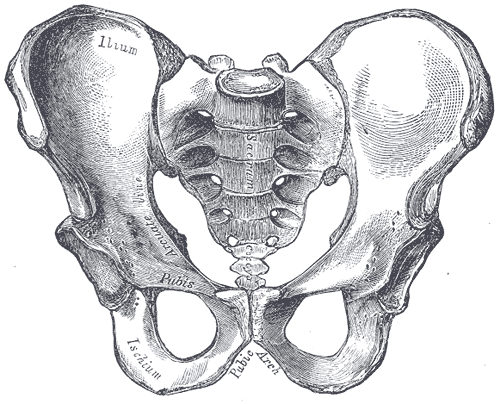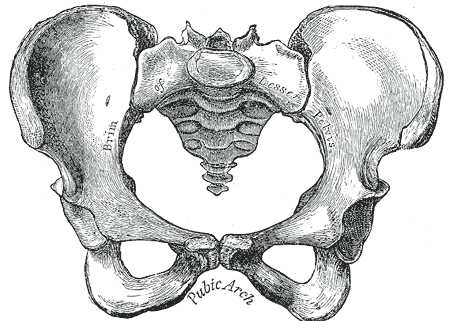Sexual dimorphism
|
WikiDoc Resources for Sexual dimorphism |
|
Articles |
|---|
|
Most recent articles on Sexual dimorphism Most cited articles on Sexual dimorphism |
|
Media |
|
Powerpoint slides on Sexual dimorphism |
|
Evidence Based Medicine |
|
Cochrane Collaboration on Sexual dimorphism |
|
Clinical Trials |
|
Ongoing Trials on Sexual dimorphism at Clinical Trials.gov Trial results on Sexual dimorphism Clinical Trials on Sexual dimorphism at Google
|
|
Guidelines / Policies / Govt |
|
US National Guidelines Clearinghouse on Sexual dimorphism NICE Guidance on Sexual dimorphism
|
|
Books |
|
News |
|
Commentary |
|
Definitions |
|
Patient Resources / Community |
|
Patient resources on Sexual dimorphism Discussion groups on Sexual dimorphism Patient Handouts on Sexual dimorphism Directions to Hospitals Treating Sexual dimorphism Risk calculators and risk factors for Sexual dimorphism
|
|
Healthcare Provider Resources |
|
Causes & Risk Factors for Sexual dimorphism |
|
Continuing Medical Education (CME) |
|
International |
|
|
|
Business |
|
Experimental / Informatics |
Editor-In-Chief: C. Michael Gibson, M.S., M.D. [1]
Overview
A sex difference is a distinction of biological and/or physiological characteristics typically associated with either males or females of a species in general. This article focuses on quantitative differences which are based on a gradient and involve different averages. For example, men are taller than women on average, but an individual woman may be taller than an individual man.
This article describes differences which clearly represent a binary male/female spilt, such as human reproduction. Women give birth to babies; men do not. Though some sex differences are controversial, they are not to be confused with sexist stereotypes.
Genetic differences
The human genome is composed of 23 unique chromosome sets and every person carries two copies of each (one from mom and one from dad) for a total of 46 chromosomes. Twenty-two chromosomes are autosomes, and the 23rd is the sex chromosome. Two types of sex chromosomes exist in humans, the X and the Y. Males have one X and one Y, while females carry two X chromosomes. All the eggs created by a women will always contain X chromosomes, while male sperm will be on average 50 % X and 50% Y. Thus, the sex of human offspring is determined by the male sperm.
Physical differences
- For information about how males and females develop differences throughout the lifespan, see sexual differentiation.
Sexual dimorphism
 | |
 |
 |
|
Top: Stylised illustration of humans on the Pioneer plaque, showing both male and female.
| |
Sexual dimorphism (two forms) refers to the general phenomenon in which male and female forms of an organism display distinct morphological characteristics or features.
Sexual dimorphism in humans is the subject of much controversy, especially relating to mental ability and psychological gender. (For a discussion, see biology of gender, sex and intelligence, gender, and transgender.) Obvious differences between men and women include all the features related to reproductive role, notably the endocrine (hormonal) systems and their physical, psychological and behavioural effects.
Such undisputed sexual dimorphism include gonadal differentiation, internal genital differentiation, external genital differentiation, breast differentiation and hair differentiation.
Some biologists theorise that a species' degree of sexual dimorphism is inversely related to the degree of paternal investment in parenting. Species with the highest sexual dimorphism, such as the pheasant, tend to be those species in which the care and raising of offspring is done only by the mother, with no involvement of the father (low degree of paternal investment). This would also explain the moderate degree of sexual dimorphism in humans, who have a moderate degree of paternal investment compared to most other mammals. Biological text books state that humans have a high degree of sexual dimorphism, but closer study by science fiction writer David Brin (2004) has shown that this is not the case. Brin also published a popular essay, 'Neoteny: A Paleo-Anthropological Speculation', in 1996.
Comparative and social psychologists have observed that males and females, in general, differ in the way they carry books while walking. Upon using a classification system of the five common methods of carrying books, a high percentage of females will partially cover their body with the books they are carrying, such as by holding them in front of the chest. Most males carry their books at the side of body, leaving the front uncovered (Jenni, M.A. 1976). The most common explanation of this observation is that women typically have less upper body strength than men, making it difficult to balance, and resulting in the need to rest the objects they are carrying on their bodies. Some psychologists hypothesize that it is a maternal instinct in many women causing them to carry inanimate objects in a protective manner.
Appearances

- On average, men are taller than women (See sexual dimorphism).
- Men usually have more body hair than women.
- Men’s skin is thicker (more collagen) and oilier (more sebum) than women’s skin[2].
- Women generally have a smaller waist in comparison to their hips (see waist-hip ratio).
- In men, the second digit (index finger) tends to be shorter than the fourth digit (ring finger), while in females the second tends to be longer than the fourth (see digit ratio).
- On average women tend to have skin that is 3-4% lighter than men. Scientists believe this is an adaptation required for increased production of Vitamin D during pregnancy. Vitamin D is necessary to help the body absorb calcium and deposit it in the bones of fast growing embryos. By having lighter skin more of the sun's UV radiation can penetrate the skin to and increase their ability to produce vitamin D.[1]
- Women tend to have a lower center of gravity (shorter legs, longer torso, relative to height) and a larger hip section than men.
Reproduction
- Female fertility declines after age 25 and ends with the menopause.[2][3] Pregnancy in the 40s or later has been correlated with increased chance of Downs Syndrome in the children.[4] Men are capable of fathering children into old age, although very recent research points to a possible correlation between a father's age and the inclination to have children with autism.[5]. Adriana Iliescu was reported as the world's oldest woman to give birth, at age 66. Her record stood until Maria del Carmen Bousada de Lara gave birth to twin sons at Sant Pau Hospital in Barcelona, Spain on December 29, 2006, at the age of 67. In both cases IVF was used. The oldest known father was former Australian miner Les Colley, who fathered a child at age 93[6]
- Men typically produce billions of sperm each month[7], many of which are capable of fertilization. Women typically produce one egg a month that can be fertilized into an embryo. Thus during a lifetime men are able to father a significantly greater number of children than women can give birth to. The most fertile woman, according to the Guinness Book of World Records , was the wife of Feodor Vassilyev of Russia (1707-1782) who had 67 surviving children. The most prolific father of all time is believed to be the last Sharifian Emperor of Morocco, Mulai Ismail (1646-1727) who reportedly fathered more than 800 children from a Harem of 500 women.
Health
Women live longer than men in most countries (notable exceptions are Afghanistan and Pakistan)[3]. One possible explanation is that more men die young because of war, criminal activity, accidents, and heart disease. The gap between males and females is decreasing in many developed countries as more women take up unhealthy practices that were once considered masculine like smoking and drinking[4], and more men practice healthier living. In Russia, however, the sex-associated gap has been increasing as male life expectancy declines [5].
The World Health Organization (WHO) has produced a number of reports on gender and health. The following trends are shown:
- Overall rates of mental illness are similar for men and women. There is no significant gender difference in rates of schizophrenia and bipolar depression. Women are more likely to suffer from unipolar depression, anxiety, eating disorders, and post-traumatic stress disorder. Men are more likely to suffer from alcoholism and antisocial personality disorder.
- Worldwide, more men than women are infected with HIV. The exception is sub-Saharan Africa, where more women than men are infected.
- Adult males are more likely to be diagnosed with tuberculosis.
- Before menopause, women are less likely to suffer from cardiovascular disease. However, after age 60, the risk for both men and women is the same.
- Overall, men are more likely to suffer from cancer, with much of this driven by lung cancer. In most countries, more men than women smoke, although this gap is narrowing especially among young women.
- Women are twice as likely to be blind as men. In developed countries, this may be linked to higher life expectancy and age-related conditions. In developing countries, women are less likely to get timely treatments for conditions that lead to blindness such as cataracts and trachoma.
- Women are more likely to suffer from osteoarthritis and osteoporosis.
Anterior cruciate ligament injuries, especially in basketball, occur more often in women than in men.
Certain conditions are X-linked recessive, in that the gene is carried on the X chromosome. Genetic females (XX) will have the disease only if both their X chromosomes are defective with a similar deficiency, whereas genetic males (XY) will have the disease if their only X chromosome is defective. For this reason, such conditions are far more common in males than in females. Examples of X-linked recessive conditions are color blindness, hemophilia, and Duchenne muscular dystrophy.
Neurological
- On average, male brains have approximately 4% more cells and 100 grams more brain tissue than females do. However, both sexes have similar brain weight to body weight ratios. Men have larger left inferior parietal lobes[6], while women have larger Wernicke's and Broca's areas [7]. Evidence of gender differences in the size of the corpus callosum is ambiguous.
- Women generally have faster blood flow to their brains and lose less brain tissue as they age than men do. [8]
Other health differences
- Women generally have a higher body fat percentage than men. [9]
- Women usually have lower blood pressure than men, and women's hearts beat faster, even when they are asleep. [10]
- Men generally have more muscle tissue mass, particularly in the upper body.
- Men and women have different levels of certain hormones. Men have a higher concentration of androgens while women have a higher concentration of estrogens.
- On average, girls begin puberty approximately two years before boys.
- Adult men have approximately 5.2 million red blood cells per cubic millimeter of blood, whereas women have approximately 4.6 million[8].
See also
References
- ↑ Template:PDFlink
- ↑ Graph @ FertilityLifelines.
- ↑ Graph @ Epigee.org.
- ↑ Age and Fertility: A Guide for Patients, American Society for Reproductive Medicine, 2003.
- ↑ Advancing Paternal Age and Autism, Reichenberg et al, Archives of General Psychiatry
- ↑ oldest birth parents
- ↑ National institute of health
- ↑ http://health.howstuffworks.com/blood1.htm
Additional Resources
- ^ Gender-related features of skin Procter & Gamble Haircare Research Centre 1997
- ^ Bren, Linda (2005) Does Sex Make a Difference? FDA Consumer magazine, July-August 2005 Issue
- ^ Marano, Hara Estroff (2003) The New Sex Scorecard Psychology Today Magazine, Publication Date: Jul/Aug 2003, Last Reviewed: 9 Sep 2005
- ^ Harasty J, Double KL, Halliday GM, Kril JJ, McRitchie DA. (1997) Language-associated cortical regions are proportionally larger in the female brain Archives of Neurology 1997 Feb;54(2):171-6.
- ^ Frederikse ME, Lu A, Aylward E, Barta P, Pearlson G. (1999) Sex differences in the inferior parietal lobe Cerebral Cortex. 1999 Dec;9(8):896-901
- ^ WHO Countries A list that provides links to statistics on various countries, including life expectancy.
- ^ Lifestyle 'hits life length gap' BBC September 16, 2005
- ^ A Country of Widows Viktor Perevedentsev, New Times, May 2006
- ^ Gender, women, and health Reports from WHO 2002-2005
- ^ Hyde, J. S. (2005) Template:PDFlink American Psychologist, Vol. 60, No. 6, pp. 581-592. See also: Men and Women: No Big Difference on the APA-sponsored website, www.psychologymatters.org.
- ^ Young, Cathy (1999) Sex and Sensibility Reason, March 1999
- ^ Larkin, Judith E. (2003) Gender and risk in public performance Sex Roles: A Journal of Research
- ^ Estimated Frequencies of the Types in the United States Population
- ^ Template:PDFlink
- ^ Rachel Karniol, Rivi Gabay, Yael Ochion, Yael Harari (1998) Is gender or gender-role orientation a better predictor of empathy in adolescence? Sex Roles: A Journal of Research, July, 1998
- ^ Baron-Cohen, Simon (2003) 'They just can't help it' The Guardian April 17, 2003
- ^ Tannen, Deborah (1990) Sex, Lies and Conversation; Why Is It So Hard for Men and Women to Talk to Each Other? The Washington Post, June 24, 1990
- ^ MacGeorge, Erina (2004) Purdue study shows men, women share same planet Purdue News, February 17, 2004
- ^ Liberman, Mark (2006) Sex-Linked Lexical Budgets Language Log, August 06, 2006
- ^ Hyde, Janet Shibley and Linn, Marcia C. (1988) "Gender Differences in Verbal Ability: A Meta-Analysis", Psychological Bulletin, 104:1 53-69
- ^ James, Deborah and Drakich, Janice (1993) "Understanding Gender Differences in Amount of Talk: A Critical Review of Research", in D. Tannen, (ed.) Gender and Conversational Interaction. Oxford University Press: New York and Oxford.
- ^ Global Gender Gaps: Women Like Their Lives Better Pew Research Center October 29, 2003
- ^ Template:PDFlink US Dept of Labor 2005
- ^ Are Teens in Low-Income and Welfare Families Working Too Much? Robert I. Lerman, Urban Institute, November 01, 2000
- ^ Fatal Occupational Injuries - United States, 1980-1997 MMWR Weekly, April 27, 2001
- ^ Popcorn, Faith and Hyperion, Lys Marigold (2000) EVEolution – The Eight Truths of Marketing to Women New York. (ISBN 0-7868-6523-7)
- ^ Illiteracy 'hinders world's poor' BBC November 09, 2005
- ^ 'Girls top of the class worldwide' BBC September 16, 2003
- ^ College gender gap USA Today October 19, 2005
- ^ 'Where have all the young men gone? ' The Guardian May 18, 2004
- ^ 'In Iran, More Women Leaving Nest for University' The New York Times July 22, 2000
- ^ Prevalence of Imprisonment in the U.S. Population, 1974-2001 U.S. Department of Justice Special Report, August 2003, NCJ 197976.
- ^ Most victims and perpetrators in homicides are male U.S. Department of Justice Office of Justice Programs Bureau of Justice Statistics, 2004
- ^ Sex Differences in Violent Victimization U.S. Department of Justice Special Report September 1997, NCJ-164508.
- ^ How men and women use the Internet Pew Research Center December 28, 2005
- ^ 'Men hold the edge on gender gap odds' Oakland Tribune October 21, 2003
- ^ Facts for features: Valentine’s Day U.S. Census Bureau Report February 7, 2006
- ^ '40m Bachelors And No Women' The Guardian March 09, 2004
- ^ 'Polygamy Proposal for Chechen Men' BBC January 13, 2006
- ^ Scott, Kenneth (2005) 'Why Online Dating is So Tough For Men' solveyourproblem.com February 3, 2005
- ^ Buss, D. M. 2003 The evolution of desire: Strategies of human mating. New York: Basic Books. (ISBN 0-465-02143-3)
- ^ Sexual Averages 1997-2003 Holodyne, Inc.
- ^ The story of Ohh! The Guardian 28 April 2004
External links
- Brin, David. 'Neoteny and Two-Way Sexual Selection in Human Evolution: A Paleo-Anthropological Speculation on the Origins of Secondary-Sexual Traits, Male Nurturing and the Child as a Sexual Image.' Journal of Social and Evolutionary Systems 18 (1996): 257-276.
Further reading
- Geary, D. C. (2006). Sex differences in social behavior and cognition: The utility of sexual selection for hypothesis generation. Hormones and Behavior, 49, 273-275. Full text